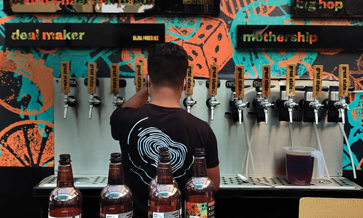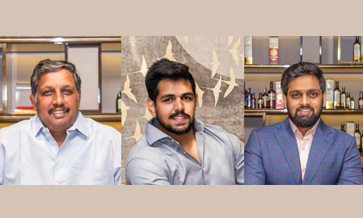I was 24 years old when I first had the opportunity to judge at the Concours Mondial de Bruxelles, an international wine competition hosted in Slovakia that year. As the youngest juror by 8 years, I felt a mix of excitement and intimidation.
Over the past decade, I’ve been invited to judge various wine, beer, and spirits competitions worldwide. Ironically, despite being a judge, I find that I learn just as much as I contribute. In a room full of experts, if you know how to listen and ask the right questions, you’ll gain far more than you give.
This brings me to the most frequently asked questions about judging at international drink competitions. Most competitions employ “blind tasting”. This means that outside of the broad category – for wine (red, white, sweet, sparkling) beer (styles like IPA or international lager) and the vintage or age statement, jurors receive no other identifying information.
Samples are sorted into “flights” based on commonalities such as grape variety, region, or age. Typically, a jury panel consists of four to five tasters, sometimes with a chairperson. Over the course of a judging day, each panel evaluates several flights, often tasting between 60 to 100 samples over 4 to 7 hours.
Clarity & focus
How do you avoid getting drunk? It’s crucial to remain sober to judge fairly. So, spit, don’t swallow! This is easier with wine and spirits, but beer competitions often don’t encourage spitting, placing the responsibility on tasters to manage their intake carefully.
Tasting tables usually provide bread, crackers or unflavoured biscuits, along with water, to help cleanse the palate. It takes discipline and experience to ensure you’re at your best from the first flight to the last.
Evaluating a good wine, beer, or spirit revolves around balance: how aromas and flavours come together for a pleasant, technically sound experience. Evaluation sheets typically break this down into:
- Sight: Assess the appearance (Does the colour match the style? What’s the clarity like?)
- Smell: Evaluate the aromas (Is there a range? Does it show typical characteristics? Any off notes?)
- Sip: Taste for flavour (Are the flavours pleasant and balanced? What’s the texture? Are there any faults?)
Most sheets reserve points for the overall impression of how sight, smell and taste harmonise. As judges, we rely on our technical knowledge to fairly grade each sample.
Challenges of judging
One of the challenges is how to set aside personal bias. I believe that “a good drink” is one that makes you want to take a second sip, and a third. However, judging demands objectivity. We strive to leave our preferences at the door and assess samples only for faults or an overall lack of appeal.
Reviewing 32 back-to-back samples of international lager, for instance, can exhaust the mind as much as dull the palate. It wouldn’t be fair to allow boredom to affect my assessment of sample 15 or 24.
One of the toughest aspects, especially as the tasting day progresses, is staying focused and diligent. There have been many times when I’ve had to mentally jolt myself back to attention, which can be quite challenging.
After over 10 years of judging wines, I’ve learned to combat palate and mind fatigue. One of the surprises of this experience is how, in the middle of a somewhat monotonous flight, a remarkable wine can suddenly awaken your senses. Just a whiff can heighten your alertness, making you hopeful for an exceptional palate experience.
When that anticipation is met, it feels like a real treat. As a jury chair for several years, I’ve witnessed this spark of recognition among my panel when we all taste a standout wine… It’s always exciting!














